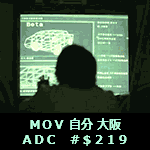|
caiman posted:The only woodworking I've done was back in 9th grade shop class (I'm 33 now), but now that I have a home and an income I'm wanting to get into it as a hobby. I have an old house with a separated two-car garage. The side I'm considering turning into a wood shop is roughly 9' x 19'. Not a huge space but hopefully big enough to work with. If I end up doing this, my first move is to gussy up the space by painting it and installing some better lighting. Then I'll start assembling my shop. While I am still starting out slowly myself with hand tools, the main thing I have learned when starting a hobby is buy what you need to do the project you are doing and no more. Except clamps, always be buying clamps. "I might need that someday when I do X" has led me to places where I have poo poo I have never ever used. I'm working through Paul Sellers' Working Wood 1 & 2 right now. I got the basics of sharpening, sharpened some chisels, bought and sharpened a spoke shave, got some blades for my coping saw, and now I can do the first couple of projects in the book. When I get to something I want to do and I don't have the tool I go for that. You do have a good list, and its not over burdened with crap you don't need but going after everything at once will def hurt. I might quibble over hand tool equivalents for some of the electric, but those are stylistic and not substantive to what you have there. ptier fucked around with this message at 21:33 on Aug 31, 2016 |
|
|
|

|
| # ? Jun 4, 2024 12:50 |
|
Phone posted:I'm not one to speak with any authority, but... I see no dust collection and no drill press. Also, front loading a bunch of tool purchases might back fire on you if it turns out that you're not really into it. Phone posted:Also, what type of woodworking are you looking to do? This should be the main determining factor for what tools (and in which order) you grab them.
|
|
|
|
GEMorris posted:Any workbench worth spending the time to build is so much more than this. There has been plenty of effort put towards designing great benches for new woodworkers, and it pains me to watch people ignore that effort, which is freely available, to "figure it out on their own". Both Schwarz and Sellers offer this information freely, and it doesn't require a shop full of tools to build those benches. I'm sure this is not the first or the last time this will be posted in this thread: $20 Workbench. TooMuchAbstraction's bench looks fine, it is actually very similar and possibly slightly more sturdy than my workbench. I'm too lazy to go take another picture right now but:  My drawers sit whee the tape measure/square/pencil are, the top practically sits on top of the sides of the drawers. I did this specifically so that the drawers would not get stuck if a jam a lot of poo poo in the drawers. I also chose to go with a 2x 3/4" plywood for the top but given the that it has multiple cross supports I don't believe the dual layers is really necessary. One mistake I made was in planning for "legroom" so I made the lower shelf only half depth instead of full depth, which makes accessing the lower shelf kinda a pain in the rear end but It's only 2x4s I can modify the design in the future if I feel the need to do so.
|
|
|
|
nielsm posted:Do you really have a gigantic lump of disposable income? If not, you should consider skipping most of the power tools. The only one I'd consider essential is the drill, the second and third are up between sander and circular saw. You can consider the rest when you decide it really is a hobby for you, and you start feeling a serious need for them.
|
|
|
|
caiman posted:Probably smart. Would you say that a circular saw is an adequate substitute for a table saw for basic projects (workbench, shelves, etc)? I mean if I got everything on my list except the table saw, that'd be saving me $1,750 right there. It would have to be real basic projects, and FYI, for a guy considering a Sawstop rather than standard table saw, a circular saw is more dangerous than a table saw in my experience, imo, jimo. ymmv.
|
|
|
|
caiman posted:I should have mentioned I do have a wet dry vac. Wasn't sure if the drill press was an essential. Cool, cool; you have the right mindset which is great. I wouldn't say that a drill press is 100% necessary; however, I'd much rather use a drill press when I can versus a handheld drill. As for projects, workbench first is always a great idea. I'm going to beat GEMorris to the punch and suggest a Knockdown Nicholson; here's an imgur album of a dude in Sweden making it: http://imgur.com/a/aWXct .
|
|
|
|
Phone posted:As for projects, workbench first is always a great idea. I'm going to beat GEMorris to the punch and suggest a Knockdown Nicholson; here's an imgur album of a dude in Sweden making it: http://imgur.com/a/aWXct . Hmm, I notice the top doesn't have an overhang. Seems like that might not be ideal for clamping?
|
|
|
|
It's designed with holdfasts in mind: http://www.jenesaisquoiwoodworking.com/wp-content/uploads/2015/05/IMG_4452.jpg
|
|
|
|
caiman posted:Probably smart. Would you say that a circular saw is an adequate substitute for a table saw for basic projects (workbench, shelves, etc)? I mean if I got everything on my list except the table saw, that'd be saving me $1,750 right there. Circular saws are the most versatile rotary saws, but they also have the most setup for whatever cut you want to make because they're just a blade with a handle and a foot. No fence, no built-in rulers/angle measurements, etc. I would absolutely get a circular saw before a table saw though. Especially, crosscutting long boards on a table saw is kind of a pain, but it's straightforward with a circular saw. Mr. Mambold posted:It would have to be real basic projects, and FYI, for a guy considering a Sawstop rather than standard table saw, a circular saw is more dangerous than a table saw in my experience, imo, jimo. ymmv. The #1 danger with table saws is kickback throwing your 5-pound stick of wood at 30MPH into your chest. Sawstops don't help with that; proper use of riving knives, zero-clearance inserts, etc. do. Kickback isn't impossible by any means on a circular saw, but at least for the cuts I've done it hasn't been a realistic possibility. As long as you make certain that both sides of the cut are supported and immobilized, there's not a lot of danger. Of course you should also make certain that you stand somewhere other than directly behind the blade. caiman posted:Hmm, I notice the top doesn't have an overhang. Seems like that might not be ideal for clamping? Use bar clamps or pipe clamps, clamp all the way to the underside of the drawers. Crotch Fruit's design (nice bench, by the way) "eats" 6.5" that way (A "2" from a 2x4, a "4" from a 2x4, and 2x .75" plywood sheets), but that's no big deal for any large clamp. Speaking of benches, mine is now covered with bits of my next project: making a box joint jig. This is so much more pleasant than the last time I tried this project, when I was doing most of my work on my router table which was resting on the floor. My back thanks me.
|
|
|
|
caiman posted:Hmm, I notice the top doesn't have an overhang. Seems like that might not be ideal for clamping? Dear god tops should never have overhangs on the front. The front edge of the top needs to be co-planar to the legs so you can actually edge plane wide board after you clamp them to the front of the bench in your leg vise or with holdfasts (which that Nicholson is designed to do). Overhanging tops is almost as bad as drawers right below the top(don't do it, they prevent you from being able to use holdfasts) Please read GEMorris fucked around with this message at 01:46 on Sep 1, 2016 |
|
|
|
My bench has a bowling alley for the top. 
|
|
|
|
Meow Meow Meow posted:My bench has a bowling alley for the top. You win. I did some work for a cheap bastard years ago that had bought like 5 or 6 lanes worth from an alley being dismantled. He had a grunt cut them up into 36x36 (or whatever) squares, and ruined a bunch of blades on cutnails, lol. That S.O.B. wouldn't part with any of it, it was for his kitchen floor. He sold me his table saw at a good price, though.  J.O. J.O.edit and holy poo poo what do you know, there's a seller in the area with 42" x 10' sections for $250 each. Larch pine no less, wtf? I thought they were only made from Northern Maple. And what do you know (G.E. ref) larch pine is harder than Teak or English Oak. Anyone want to go halfies? Mr. Mambold fucked around with this message at 03:36 on Sep 1, 2016 |
|
|
|
A lot of bowling alley lanes were only hard maple for the first section of the lane to absorb the impacts from bowling balls.
|
|
|
|
General note: I have never regretted buying a quality tool but I have regretted not buying it sooner. You don't have to buy top of the line but buying a professional quality tool over homeowner duty will make woodworking more fun. Good 2x T8 light fixtures LED bulbs (Tip: match the temperature of all your bulbs to make photography easier) Table saw (You can wait on this if you want and buy circ saw first) Router Corded drill Circular saw Sanding block (can also make these, check ibuildit.ca) Clamp set (you will use all these clamps but you'll need longer ones too. I wouldn't bother with F clamps smaller than 18" in the beginning) Caliper (I would recommend the iGaging IP54 but the Neiko is probably fine. You may even consider a dial caliper so you don't have to fool with batteries.) Utility knife Bad: Bite the bullet and buy better quality on these. Random orbital sander (spend more) Jigsaw (recommend Bosch or other name brand, spend a lot more) Combination square (recommend PEC Blem, there are a couple places to get them but here is one, no affiliation : http://www.ebay.com/itm/Blem-Cosmetic-Second-PEC-USA-12-4R-combination-machinist-square-acc-001-6-/152222500893?hash=item23712b081d Reason, the combo square should be accurate and trustworthy. Hardware store squares are okay for rough carpentry but they will frustrate you in woodworking and you can never fully trust them.) Peg board (no one uses peg board anymore, check out tool boards by John Heisz or Woodgears) Questionable Chisel set (Not familiar with this set, might be fine, can't say) Rubber mallet (buy a dead blow first, or buy both, or even better buy a dead blow rubber mallet. I have a Nupla dead blow non sparking and it is the bomb, love it.) Block plane (I would buy a #4 or #5 first) Hand saw (not a fan of impulse hardened teeth) Push stick set (make your own) No comment Screwdriver set Level
|
|
|
|
I'm new to woodworking and so far I've been using only hand tools, mostly so I can develop the skills to use them and because I don't have electricity in my garage yet/money to buy the power tools I would want. I've built the Paul Sellers bench as my first project and learned how to use a hand saw, plane, chisels, and how to sharpen all of them, and it was a fantastic learning experience. I've also built his wall clock (dimensioning everything with my handsaw/plane), the lee valley spokeshave (hell of a lot of fun to make and it's awesome, made from cherry scraps), tools for working wood bowsaw with the coping saw sized blades (also a very cool saw, from oak and cherry scraps) and I just started working on a table made from hard maple. I finished ripping the 4th leg from 2 1/4" stock, which was a bit of exercise but fun. Definitely beats going to the gym. Now I just have to rip out the aprons and then I can start laying out the joinery. I will say one thing about handsaws (to anyone who's looking into buying a handsaw): I was given my panel saw, which had a lot of rust on it...cleaned it up and sharpened it and it cuts through wood like nothing and stays dead on the line without effort on my part. It looks like it was made in Connecticut, though that's about as much as I can read on the blade. You don't have to spend a lot of money on them...but do make sure you get a good one. I've used those impulse hardened saws before and they're horrible. I also have the lee valley set too...I think I need to touch up the sharpening though because they don't seem to cut as well as my panel saw for some reason. If you are getting a flea market saw, look out for broken teeth, uneven teeth, or a curved or wavy blade. Improperly sharpened saws are impossible to get a straight cut from. Even if a few teeth have improper set in them is enough to throw off the cut. I guess I'm writing this for the guy above who's asking what he should get. It depends on what you want to build, honestly. I started off with a good hand saw and narex chisels, with a set of sharpening stones and strop (very important) and saw files, #4 stanley plane from ebay (got a #5 shortly after)(also got the granite block from lee valley to flatten the planes and the sharpening stones), thorex mallet, square, marking gauge, marking knife, 10x 36" bar clamps from harbor freight, veritas router plane, and...that's all I can remember atm. That was enough to build my work bench. I've since picked up the lee valley quick release vise, lee valley spokeshave kit, scrapers, scraper burnisher, auriou cabinet and modelers rasps (highly recommended... at first I thought they were expensive but they're amazing and a hell of a lot of fun to use), set of holdfasts (haven't used them yet though), veritas joinery saws, tfww bowsaw/crappy coping saw, gouge, veritas plough plane, and more poo poo I can't remember off the top of my head. I feel like I can pretty much build whatever I want with some effort in dimensioning everything. I'll probably save up for a nice bandsaw when I start getting sick of doing the grunt work by hand though, or when people start wanting me to build them stuff. Are you doing this for fun? Hand tools are a hell of a lot of fun if you use good quality tools. You do have to learn how to use them and maintain them though. Keeping everything sharp is one of the hidden secrets to woodworking, even if everyone tells you that you need to keep things sharp. You don't really appreciate it until you put effort into keeping everything sharp, because woodworking becomes a hell of a lot easier and more enjoyable when you do. Crappy hand tools will only frustrate you. Power tools will let you build a lot of things quickly and make building big things easier, though you need a respirator, eye and ear protection and some sort of dust collection. Try hand tools first to see if you actually enjoy woodworking. The skills you build definitely helps, and you'll use them even after you get power tools. Good tools are also easy to resell if you decide it's not for you, so there's not really a good reason to not buy quality tools.
|
|
|
|
I have a question. First off this has quickly become my favorite thread. I am in a unique business (I own and operate carnival games) and because of this I'm more often than not in a situation where I have to make it because it's not something that is available to buy when I need something. I have a nice heated building I rent to work in the winter and I have a ton of tools. Most of my stuff I build is more function over form but some of it can be fun to make ornate or really nice if only because I can and my competition can not. I usually use sheet goods rather than gluing and clamping, in fact I'm not sure if I even still have a plane at all. I just don't really do that kind of work. My question is does anyone know of a bench plan that's not so "woodworking" orientated? I would rarely have need for a woodworking vice but do use my regular vice often. I really don't need holdfasts and do about as much aluminum fab on the bench I have now as wood. The one I have in the shop now is about 12 foot long and is very sturdy, it's just old and greasy as hell from the previous tenant and is actually too high to work comfortably. Which is crazy because I'm 6'2". Anyway I'd like something sturdy, with drawers and a bottom shelf for my corded tools and I'd really like to be able to set it up to build a small or a few small sections like stands that I could mount my chop saw, miter saw, router ect in on the end to manipulate long material. I have about 30 feet I could work with lengthwise. If it's not a terrible idea is like to also be able to wire outlets in and maybe a light table.
|
|
|
|
I have a question too actually, not related though. What's likely to be a suitable finish for woodwork used in prospecting applications? Sluices and classifiers see a lot of gravel and water over the top of them, a sluice is literally a gutter you pump water through and shovel gravel into too wash the lighter bits out, a half ton of gravel in a day getting washed through isn't unusual. I'm after building some better equipment and intend to do at least some of it using sheet stock because it's easy to source, cheap and not too heavy or particularly difficult to work with and I was hoping for some ideas on finishes which are highly abrasion resistant and waterproof, I don't mind re applying regularly but I'd like to not do more than once or twice a year if possible unless it's a fairly quick process. Even just the abrasion resistance would be good as I also need to build some dry equipment which will be much easier to build in wood rather than metal.
|
|
|
|
No finish will hold up to that. You rely on the woods natural resistance to abrasion and replace it when it wears away.
|
|
|
|
Excellent, thanks for the tips.
|
|
|
|
bend posted:What's likely to be a suitable finish for woodwork used in prospecting applications? Agreed with GEMorris that you're not going to find a finish that can hold up to that kind of abuse. Just make the tool out of a hard wood, let it dry out as much as possible between jobs, and replace as needed. Maybe you could soak it in bleach or something periodically to kill any rot-causing organisms? But presumably you'd need to make certain that any nasty chemicals you treat the wood with would need to be removed from it before you start using it, lest you end up washing those chemicals downstream...
|
|
|
|
What about either plasti-dip or bedliner? Both are abrasion resistant and waterproof. Or just line the thing with tin. Or both!
|
|
|
|
Lining with tin would reduce friction. It comes down to which is more work to replace, tin or wood. Another problem with using a finish, is that like GE said, no finish is going to hold up so you'll end up with wood finished unevenly and frequently exposed to moisture unevenly: it's a recipe for a wood pretzel. White oak might be a good choice. Stable, rot resistant, hard, tough.
|
|
|
|
How big is the sluice going to be? I have a metal one from my childhood that was under $100 and it was great: relatively light and you can take the ribs off with a clasp making it really easy to clean out. Why would a wooden one be better? How often are you using it? Usually I screened out all of the bigger rocks so only sand and pebbles were going through it.
|
|
|
|
kenny powerzzz posted:I have a question. First off this has quickly become my favorite thread. I am in a unique business (I own and operate carnival games) and because of this I'm more often than not in a situation where I have to make it because it's not something that is available to buy when I need something. I have a nice heated building I rent to work in the winter and I have a ton of tools. Most of my stuff I build is more function over form but some of it can be fun to make ornate or really nice if only because I can and my competition can not. I usually use sheet goods rather than gluing and clamping, in fact I'm not sure if I even still have a plane at all. I just don't really do that kind of work. My question is does anyone know of a bench plan that's not so "woodworking" orientated? I would rarely have need for a woodworking vice but do use my regular vice often. I really don't need holdfasts and do about as much aluminum fab on the bench I have now as wood. The one I have in the shop now is about 12 foot long and is very sturdy, it's just old and greasy as hell from the previous tenant and is actually too high to work comfortably. Which is crazy because I'm 6'2". Anyway I'd like something sturdy, with drawers and a bottom shelf for my corded tools and I'd really like to be able to set it up to build a small or a few small sections like stands that I could mount my chop saw, miter saw, router ect in on the end to manipulate long material. I have about 30 feet I could work with lengthwise. If it's not a terrible idea is like to also be able to wire outlets in and maybe a light table. It sounds like you are looking for the Hammerzone Workbench. The design is very flexible for whatever height, depth and length you want. Your choice of materials for the top and a bottom shelf for storage. You'll have to rig up your own drawers though.
|
|
|
|
Flattened Spoon posted:How big is the sluice going to be? I have a metal one from my childhood that was under $100 and it was great: relatively light and you can take the ribs off with a clasp making it really easy to clean out. Why would a wooden one be better? How often are you using it? Usually I screened out all of the bigger rocks so only sand and pebbles were going through it. About 4 foot long. I'm building a drop riffle style so the riffles are fixed in place and you tilt it up and wash into a bucket. Significantly easier to get the profiles I need with a router rather than my sheet metal brake, my river sluices don't see regular use though as I don't really have the flow I need locally. This ones mostly going to be used for testing ground in some creeks further south and needs to be easy to clean out and fairly portable. I'll set up my larger gear if it looks like I'm going to be putting serious work into a spot, but I was after building something that can run 3-5 buckets without too much issue for bulk testing to see if I'm going to get a good average over as larger amount of material before I haul in pumps and trommels and things. I'll have a look at white oak and if it doesn't hold up then I might use fibreglass. Thanks.
|
|
|
|
My goal this weekend is to build a workstool for my carving bench. The crummy little chair I have is really hurting my back, so I want to build something fitted to my weird body. My plan so far is to have a round seat with a slight tilt for comfort, and four legs with rails in between. I probably want to do a mortise and tenon joint for the rails, but I'm not sure of the best way to attach the seat. Any advice or pitfalls?
|
|
|
|
Cpt.Wacky posted:It sounds like you are looking for the Hammerzone Workbench. The design is very flexible for whatever height, depth and length you want. Your choice of materials for the top and a bottom shelf for storage. You'll have to rig up your own drawers though. There's something to be said about having a nice solid worktop in the style of most woodworking benches, compared to just sheet material though, no matter what you're doing.
|
|
|
|
Flattened Spoon posted:
Very interesting. I'm definitely doing this for fun, so your approach might be right for me, at least at the beginning. When it comes to hand tools over power tools I'm not concerned with difficulty and time as much as I am precision. But I guess that's what makes it more of a challenge. Spatulater bro! fucked around with this message at 21:06 on Sep 1, 2016 |
|
|
|
bend posted:About 4 foot long. I'm building a drop riffle style so the riffles are fixed in place and you tilt it up and wash into a bucket. Significantly easier to get the profiles I need with a router rather than my sheet metal brake, my river sluices don't see regular use though as I don't really have the flow I need locally. This ones mostly going to be used for testing ground in some creeks further south and needs to be easy to clean out and fairly portable. Keep in mind that white oak is pretty heavy and gets heavier when it soaks up water. Not sure about fiberglass...repeated impacts might cause delamination, though I haven't worked with fiberglass and don't really have experience with it. The first google hit for drop riffle style is made in abs plastic.
|
|
|
|
Quick question... On something like an end grain (checkerboard config) cutting board which has soo many glue joints, is the piece still as strong (or stronger) than a single dimensional piece of lumber, or one that has just been glued up in a single direction? I've been doing long-board skateboard desk for a while (just basic rip and glue stuff) but i was thinking i'd like to do an end grain design for my next one. Just not sure if all of those glue joints are going to be able to stand up to the flex and bounce of a skateboard. If it matters, the decks usually end up being 3/4 - 5/8 thick when all is said and done.
|
|
|
|
Sointenly posted:Quick question... No way is it as strong, not for a skateboard, it's asking for trouble.
|
|
|
|
Agreed with Mambold. Think about which way the flexing forces you'd apply (by standing on the skateboard) would deform the wood in an end-grain vs. long-grain situation. In end-grain, you're expecting the fibers to transfer forces laterally between each other, and all it takes for the board to break is enough fibers to detach from their neighbors. There's no real way for the board to flex without forcing fibers to detach. In long-grain, each individual fiber can transfer a portion of the load "within itself" to the wheel mounting, and if one fiber is flexing, then its neighbors are as well, so the board stays together.
|
|
|
|
Well you could do a test short board and send it to Braille Skateboarding, they ride just about anything for YouTube.
|
|
|
|
Do a 2 layer composite, with a top layer veneer of end grain and the main body as long grain.
|
|
|
|
|
Cpt.Wacky posted:It sounds like you are looking for the Hammerzone Workbench. The design is very flexible for whatever height, depth and length you want. Your choice of materials for the top and a bottom shelf for storage. You'll have to rig up your own drawers though. Pretty much perfect. I could have just winged it and come up with something probably similar but I didn't want to use a dimension that would cause an issue that could have been easily overcome or build something that was just the wrong size and be uncomfortable to use. I'll use some 3/4 birch ply I got a sweet deal on a few months ago for the top even using two layers or maybe 3 including a layer of mdf for the top. I'll build 2 of them and lave a space in the middle that I can put my chop saw, miter saw ect in. Thank you. kenny powerzzz fucked around with this message at 01:43 on Sep 2, 2016 |
|
|
|
If looking for generic workbench designs, I like the selection at Family Handyman and I think there are free plans for most of them. http://www.familyhandyman.com/workshop/workbench
|
|
|
|
If you're looking for an entry level chisel set, buy the Narex bevel-edge from Lee Valley. Just don't buy the set of 7 or 10 unless you really want spares -- I realize now I could have gotten away with a 1/4", 1/2", and 1" for cheaper.
|
|
|
|
I have a question about saws. I am in the process of refurbing a cross cut panel saw and after the 100 Grit Sandpaper, I have gone from something like this rip cut panel:  to this:   it feels stupid smooth and will get better when I hit it with the 220 and 320. The handle is jacked but it will do until I can fashion another one. Will the pitting etc be an issue for cutting? Or are they more like speed holes! 
|
|
|
|
Spazz posted:If you're looking for an entry level chisel set, buy the Narex bevel-edge from Lee Valley. Just don't buy the set of 7 or 10 unless you really want spares -- I realize now I could have gotten away with a 1/4", 1/2", and 1" for cheaper. Seconding this, those Narex chisels are a great, especially for their price. 1/4, 3/8, 1/2, and 1-1/4 are all anyone really "needs" in bench chisels. Splurge on the Ray Iles mortising chisel in 3/8, worth every penny.
|
|
|
|

|
| # ? Jun 4, 2024 12:50 |
|
Someone posted a few pages ago about removing the slight chamfer on dimensioned lumber - looking at it I only see a number of agreements on why you want to square them up, but not an agreement on what was less of a pain in the rear end - planing the surface flat or ripping the boards down. I'm in the same boat and only have hand tools. I've got a decent pull saw but I've only got a #4 plane so I'm leaning towards just ripping the pieces and then squaring up any screwup I made. Any thoughts one way or the other before I embark on this crazy plan?
|
|
|




















